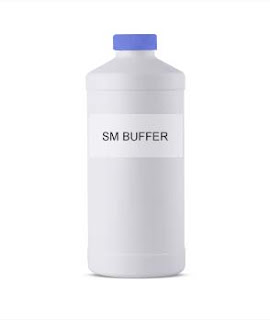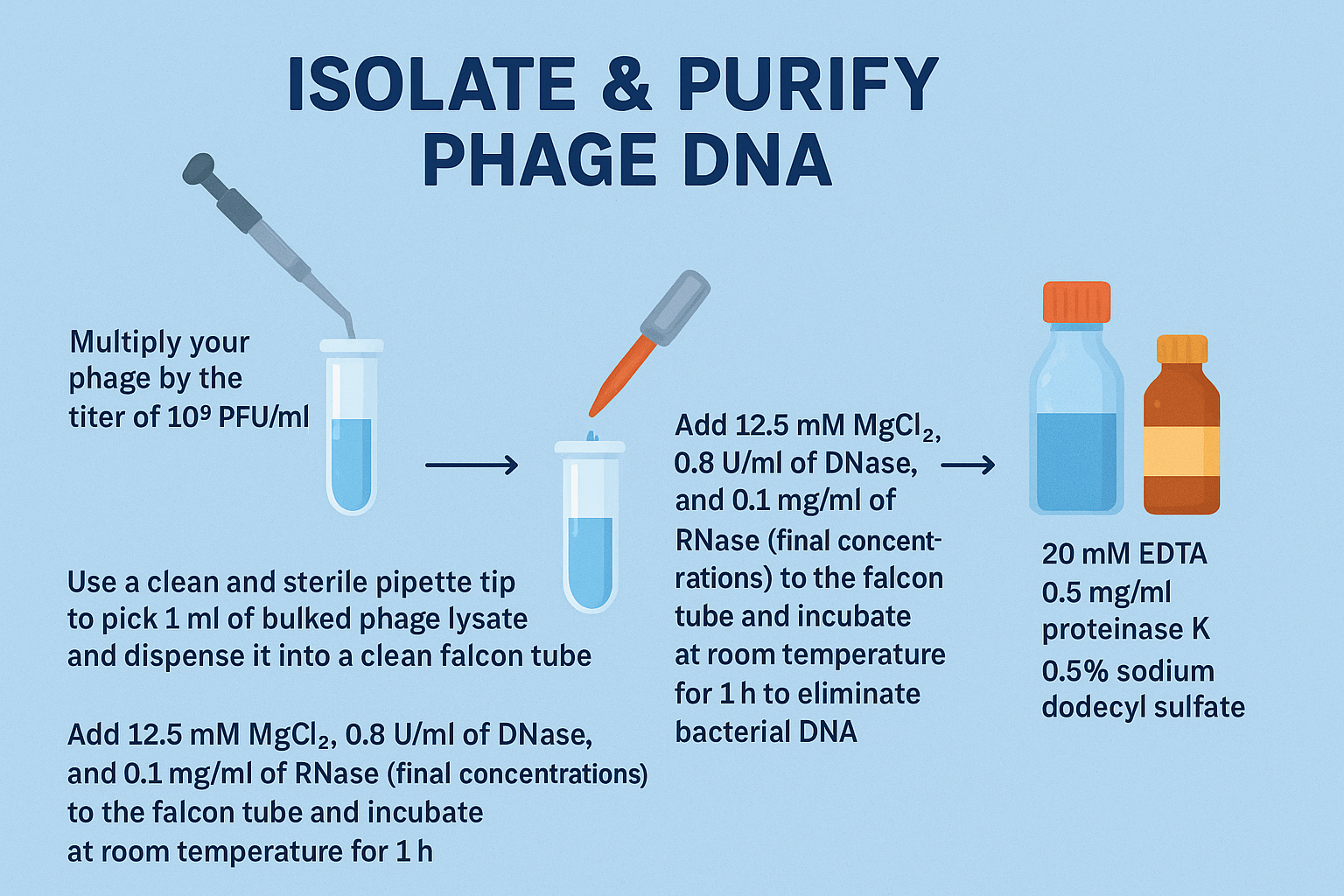SM buffer is primarily used in biology laboratories, and its main function, like any other buffer, is to stabilize the pH. That is, it can withstand minor pH changes, increasing the stability of biological materials or molecules. When performing an experimental task, it is critical to keep all other variables constant and only vary the tested variables. This emphasizes the significance of keeping the pH stable through reliable and consistent methods such as buffer systems. SM buffer is one of them and is used for routine phage suspension manipulation. You can make SM buffer with or without gelatin. During storage, the gelatin in the SM buffer stabilizes phage particles.

Preparation of SM Buffer
Content
| Reagent | Amount | Final Concentration |
|---|---|---|
| NaCl | 5.8 g | 100 mM |
| MgSO4·7H2O | 2 g | 8 mM |
| Tris-Cl (1 M, pH 7.5) | 50 ml | 50 mM |
| Gelatin (2%, w/v) | 5 ml | 0.01% (w/v) |
| H2O | to 1 litre | – |
This recipe is for making one litre. If you need a different volume, use our SM Buffer calculator.
Procedure
To prepare 1 litre of SM buffer with gelatin,
- Dissolve the NaCl and MgSO4·7H2O in 800 ml of H2O;
- Add the Tris-Cl and gelatin,
- Adjust the volume to 1 litre with H2O.
- Sterilize the buffer by autoclaving for 20 minutes at 15 psi (1.05 kg/cm2) on a liquid cycle.
- After the solution has cooled, dispense 50 ml aliquots into sterile containers.
Storage condition
SM buffer with gelatin may be stored indefinitely at room temperature
NOTE: Discard each aliquot after use to minimize the chance of contamination
To prepare SM Buffer without gelatin click here and to prepare Tris-cl click here

[…] SM Buffer (for preparation click here) […]
[…] also be prepared with 0.002% (w/v) gelatin; see the recipe for SM buffer with gelatin. To prepare SM Buffer with gelatin click here and to prepare Tris-cl click […]
[…] phage) asking phage researchers which buffer they prefer for long-term storage. Unsurprisingly, SM and lambda buffer were by far the most popular answers. However, while the buffer is a critical part of the story, […]